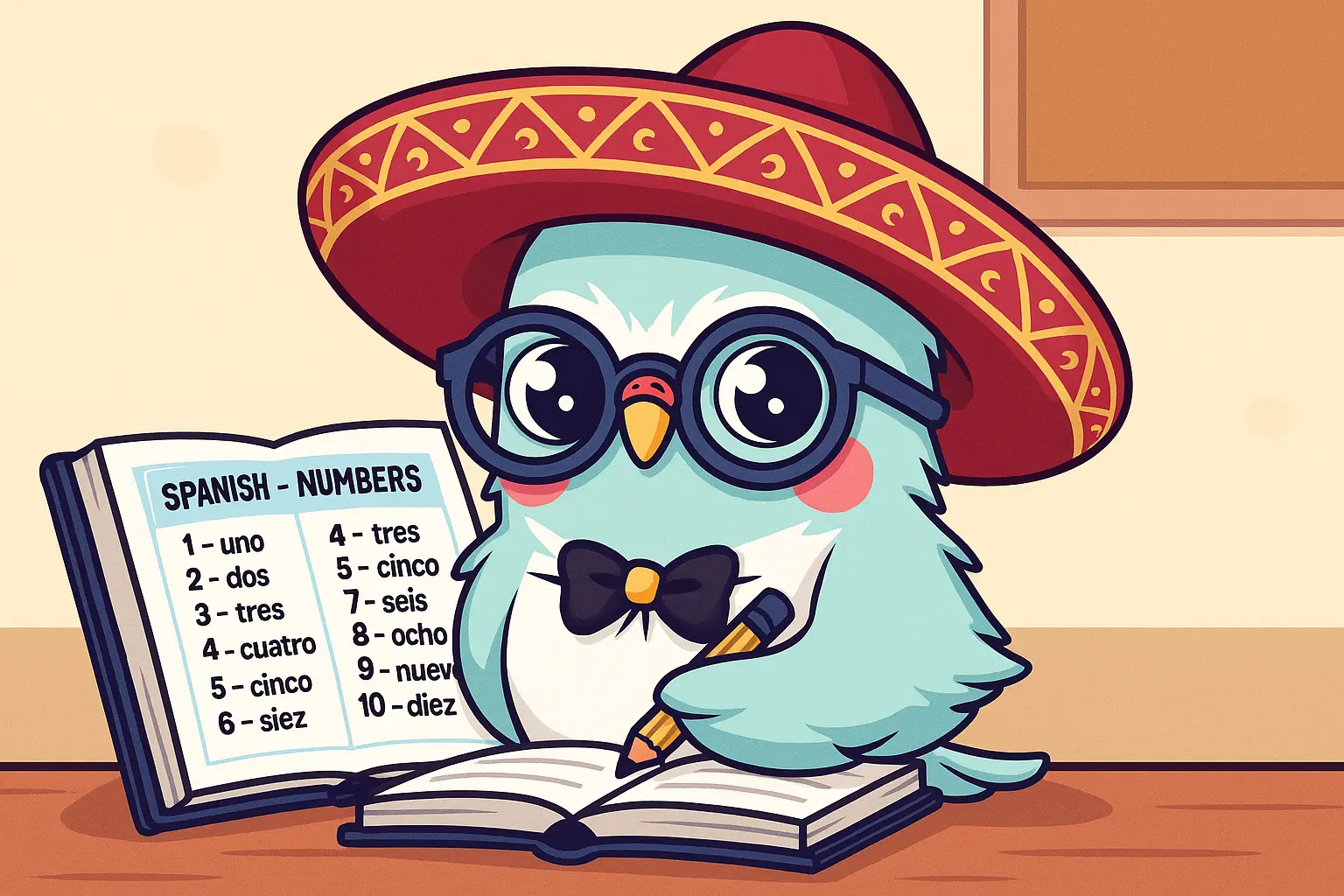“¿Cuántos años tienes?” (How old are you?) This simple question demonstrates why learning numbers in Spanish is essential for meaningful conversations. Whether you’re ordering food, telling time, or sharing your age, Spanish numbers appear in countless daily interactions. This guide covers everything from basic Spanish numbers 1-10 to advanced counting up to 1000, including ordinal numbers in Spanish and pronunciation tips. By the end, you’ll confidently use numbers in Spanish conversations and understand the patterns that make Spanish counting logical and predictable.
Spanish Numbers 1-10
These ten numbers form the foundation for all Spanish counting. Master these first, as they appear in every larger number you’ll learn.
Pronunciation Tips for Spanish Numbers 1-10
Spanish vowels are consistent: “a” always sounds like “ah,” “e” like “eh,” “i” like “ee,” “o” like “oh,” and “u” like “oo.” This consistency makes pronunciation predictable once you learn the basics. Pay attention to stress patterns. “Cuatro” stresses the first syllable (KWAH-troh), while “siete” stresses the second (see-EH-teh). When in doubt, stress typically falls on the second-to-last syllable.
Spanish Numbers 11-20
Numbers 11-15 are completely irregular and must be memorized. However, 16-19 follow a clear pattern: “dieci-” plus the single digit. This pattern continues logically throughout Spanish numbers.
Using Spanish Numbers 11-20 in Context
These numbers appear constantly in age discussions: “Tengo dieciocho años” (I’m eighteen years old). They’re essential for time: “Son las tres” (It’s three o’clock) or “A las quince” (At fifteen/3 PM in 24-hour time). In shopping contexts, you’ll hear “Cuesta doce euros” (It costs twelve euros) or “Dame cinco manzanas” (Give me five apples).
Spanish Numbers 21-30
Numbers 21-29 can be written as one word (veintiuno) or three words (veinte y uno). Both forms are correct, though the single-word version is more common in modern Spanish.
Writing Rules and Common Mistakes with Numbers 21-30
Spanish offers two correct ways to write numbers 21-29: combined (veintiuno, veintidós) for formal writing and separated (veinte y uno, veinte y dos) for casual use. When modifying nouns, always use the separated form: “veinte y una personas” (twenty-one people). Watch for gender agreement: “veintiún estudiantes” (masculine) vs. “veintiuna estudiantes” (feminine). The combined forms carry accent marks (veintitrés, veintiséis) to maintain proper pronunciation, while separated forms don’t need accents since each word keeps its natural stress.
Spanish Numbers 1-100
The Tens in Spanish
These base forms combine with single digits using “y” (and): treinta y uno (31), cuarenta y dos (42), cincuenta y tres (53).
Complete Spanish Numbers 30-100 Patterns
After 30, Spanish numbers follow an elegant pattern: [tens] + y + [ones]. This creates predictable combinations: - 31 = treinta y uno - 45 = cuarenta y cinco - 67 = sesenta y siete - 89 = ochenta y nueve
Special Rules for Spanish Numbers 1-100
“Uno” changes to “un” before masculine nouns: “veintiún años” (twenty-one years) but “veintiuna personas” (twenty-one people). This agreement rule applies to all compound numbers ending in “uno.” Written accents appear on some compound numbers: “veintitrés,” “veintiséis.” These maintain proper pronunciation when spoken aloud.
Spanish Numbers 1-1000
Hundreds in Spanish
Hundreds agree with the gender of the noun they modify: “doscientos hombres” (200 men) vs. “doscientas mujeres” (200 women).
Understanding Numbers in Spanish 1-1000
Understanding Numbers in Spanish 1-1000 Large numbers combine logically: 347 = trescientos cuarenta y siete. Break complex numbers into parts: hundreds + tens + ones, connected by “y” only between tens and ones.
Ordinal Numbers in Spanish: First, Second, Third
Basic Ordinal Numbers in Spanish (1st-10th)
Advanced Ordinal Numbers (11th-100th)
Spanish simplifies ordinal numbers after tenth by using regular cardinal numbers instead of complex ordinal forms. While formal writing might include “undécimo” (eleventh), everyday Spanish uses “el número once” or simply “once” in context.
This practical approach means “floor fifteen” becomes “piso quince,” “page twenty” becomes “página veinte,” and “room thirty” becomes “habitación treinta.” This rule makes Spanish ordinals much easier than English equivalents like “fifteenth” or “twentieth.”
Frequently Asked Questions
Are there differences between Mexican and Spanish numbers?
The numbers themselves are identical, but pronunciation varies. Spain uses “th” sounds for “c” before “e/i,” while Mexico uses “s” sounds.
What numbers are considered lucky or unlucky in Spanish culture?
Like many cultures, 13 is often considered unlucky. The number 7 is generally considered lucky across Spanish-speaking countries.
How do Spanish speakers typically say phone numbers?
Usually digit by digit, though some regions group numbers: “seis-uno-cinco, dos-tres-cuatro, siete-ocho-nueve-cero.”
